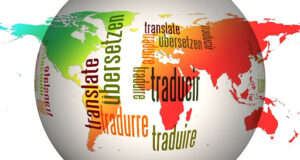In today’s interconnected world, the internet has erased geographical boundaries, bringing together diverse audiences from every corner of the globe. As businesses strive to cater to this vast and varied user base, the importance of speaking their language—both literally and figuratively—cannot be overstated. This is where the power of multilingual SEO comes into play.

Multilingual SEO is not just about translating content; it’s about ensuring that your website resonates with audiences from different linguistic backgrounds, cultures, and regions. And at the heart of this strategy lie meta tags. These seemingly small pieces of code play a pivotal role in how search engines understand and present your content to users worldwide. But as with all things SEO, the devil is in the details. Ensuring accuracy, relevance, and consistency in meta tags across multiple languages can be the difference between global success and missed opportunities. In this article, we’ll delve deep into the world of multilingual meta tags, offering insights and strategies to optimize them for a truly global audience.
Diving into Multilingual SEO
Multilingual SEO is the strategic process of optimizing a website to be search-friendly across multiple languages and regions. It’s not just about direct translation; it’s about understanding cultural nuances, search behaviors, and regional preferences. For global businesses, it’s not a luxury but a necessity. Different languages present unique challenges – from right-to-left text formats to region-specific idioms. Moreover, search algorithms can interpret content differently based on language and location. Thus, while the core principles of SEO remain consistent, the application requires a tailored approach for each language and region, ensuring that businesses are truly speaking the language of their global customers.
The Role of Meta Tags in SEO
Meta tags, often hidden in a website’s code, serve as concise descriptors that tell search engines what a page is about. They are pivotal in SEO, acting as the first point of interaction between a site and search algorithms. Properly optimized meta tags can significantly boost a page’s visibility in search results. On the flip side, poorly crafted or missing tags can hinder a site’s potential to rank well. Especially with the rise of mobile and voice searches, it’s crucial to check SEO meta tags regularly to ensure they’re up-to-date and relevant, directly impacting user experience and search rankings.
Translating Meta Tags for a Global Audience

When venturing into multilingual territories, simply translating content isn’t enough. Meta tags, being the backbone of on-page SEO, require special attention. Translating them involves more than just switching languages; it’s about capturing the essence of content in a culturally relevant manner. For instance, a direct translation might miss out on region-specific keywords or phrases that locals commonly use.
Moreover, cultural nuances play a significant role. What’s appealing or clear in one language might be ambiguous or even offensive in another. Therefore, businesses must ensure that their meta tags are not only linguistically correct but also culturally appropriate.
Consistency is another challenge. Different translations of a brand or product name can confuse search engines and users alike. It’s essential to maintain uniformity in brand-related terms across all languages.
In essence, while tools and automated translators can be a starting point, human expertise is invaluable. SEO professionals must collaborate closely with native speakers or localization experts to craft meta tags that resonate authentically with each target audience, ensuring a seamless and culturally attuned online experience.
The Need for a Meta Tags Checker
In the vast digital landscape, where businesses are vying for attention across borders and languages, ensuring the accuracy of meta tags becomes paramount. Enter the meta tags checker – a tool designed to validate and optimize meta tags across different languages. These tools scan a website’s meta information, highlighting inconsistencies, errors, or areas of improvement, ensuring that businesses present a consistent image across all linguistic fronts.
For businesses targeting multiple regions, a meta tags checker is invaluable. It not only ensures linguistic accuracy but also helps in maintaining a consistent brand voice across different languages. Imagine the confusion if a product is described differently in English and Spanish meta descriptions. Such inconsistencies can harm brand perception and SEO rankings.
Furthermore, as search engines become smarter, they’re better at detecting and penalizing sloppy or manipulative meta tag practices. A checker helps businesses stay ahead, ensuring that their meta tags align with best practices, are free from duplication, and are optimized for each specific language and region.
Best Practices for Meta Tag Implementation
Implementing meta tags for a global audience requires a strategic approach. First and foremost, avoid direct translations. Instead, localize content, considering cultural nuances and local search behaviors. For instance, while ‘sneakers’ might be a popular term in the US, ‘trainers’ is more commonly used in the UK.
Always maintain consistency, especially with brand names or specific product terminologies. This not only aids in brand recognition but also ensures clarity for search engines.
Regularly update meta tags to reflect any changes in product offerings or brand messaging. Also, with search algorithms evolving, it’s crucial to stay informed about the latest SEO trends and adjust meta tags accordingly.
Lastly, always test and iterate. Use tools to check SEO meta tags, gather data, and refine your approach based on performance metrics, ensuring that your meta tags remain a strong asset in your multilingual SEO toolkit.
Challenges in Multilingual Meta Tag Optimization
Optimizing meta tags for multiple languages is not without its challenges. One common pitfall is relying solely on direct translations, which can lead to context loss or cultural misinterpretations. For instance, a phrase that’s compelling in English might sound awkward or even offensive when directly translated into another language. Additionally, different regions may have unique search behaviors or terminologies that generic translations might miss. Search algorithms, too, can pose challenges. They might interpret duplicated content across different language versions of a site as spammy, even if the intention is genuine localization. Navigating these nuances requires a blend of linguistic expertise and SEO knowledge.
Conclusion: The Road Ahead for Multilingual SEO
The digital world is increasingly interconnected, making multilingual SEO a pivotal aspect of global business strategy. As we move forward, prioritizing accurate and culturally sensitive meta tags will be crucial. Businesses must embrace the tools and strategies available, ensuring they resonate authentically with audiences worldwide, enhancing both visibility and trust.
Similar Posts:
- Android: How To Type In Different Languages With Gboard Keyboard?
- How Do You Delete A Language On Duolingo?
- How To Use Spotify To Learn Another Language?
- How To Auto Refresh Chrome Tabs Without An Extension?
- How To Copy An Instagram Comment?
- How Do I Change My Youtube Account From Personal To Brand?
- How To Make Chrome Open Incognito Mode By Default?
- 5 Reasons to Do Localization Testing
- 5 Reasons to Do Localization Testing
- How To Approve Tagged Photos On Instagram?